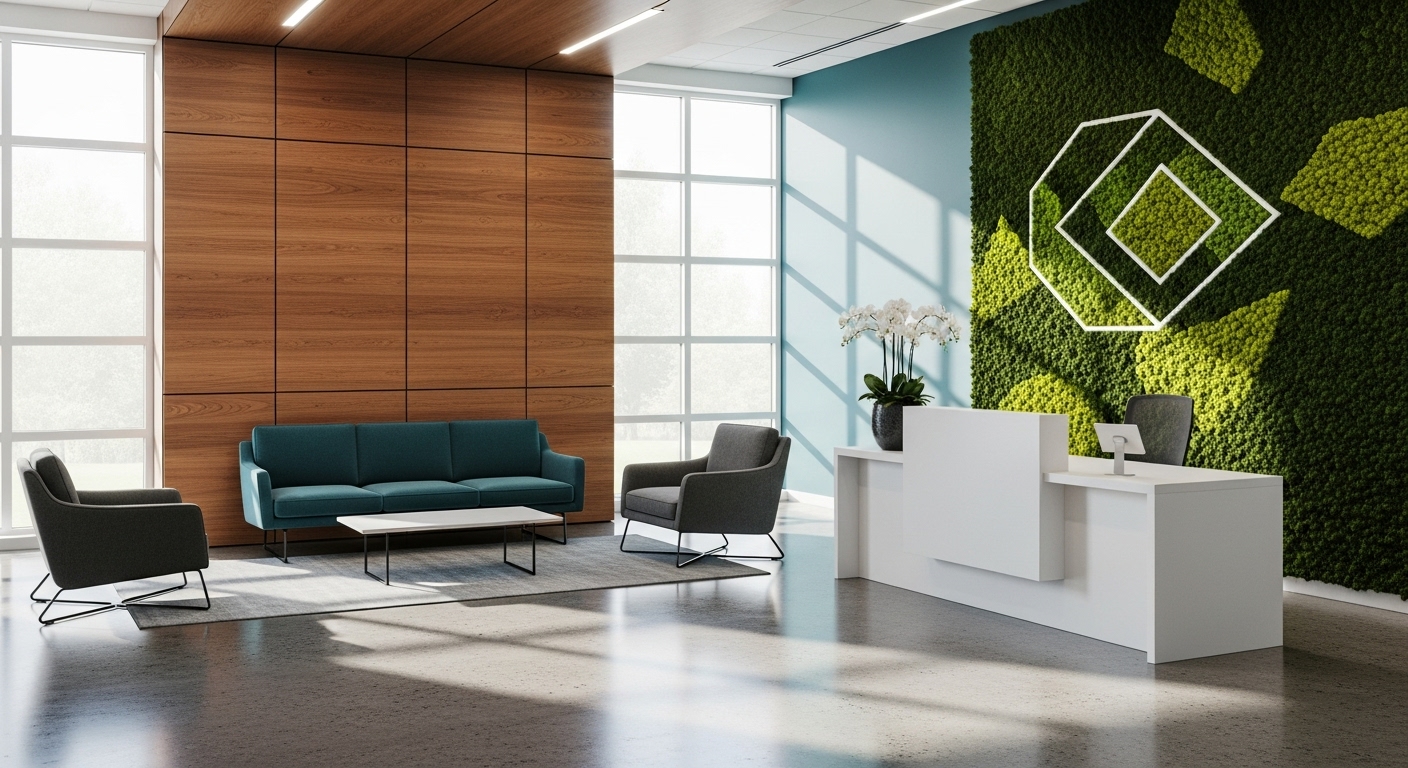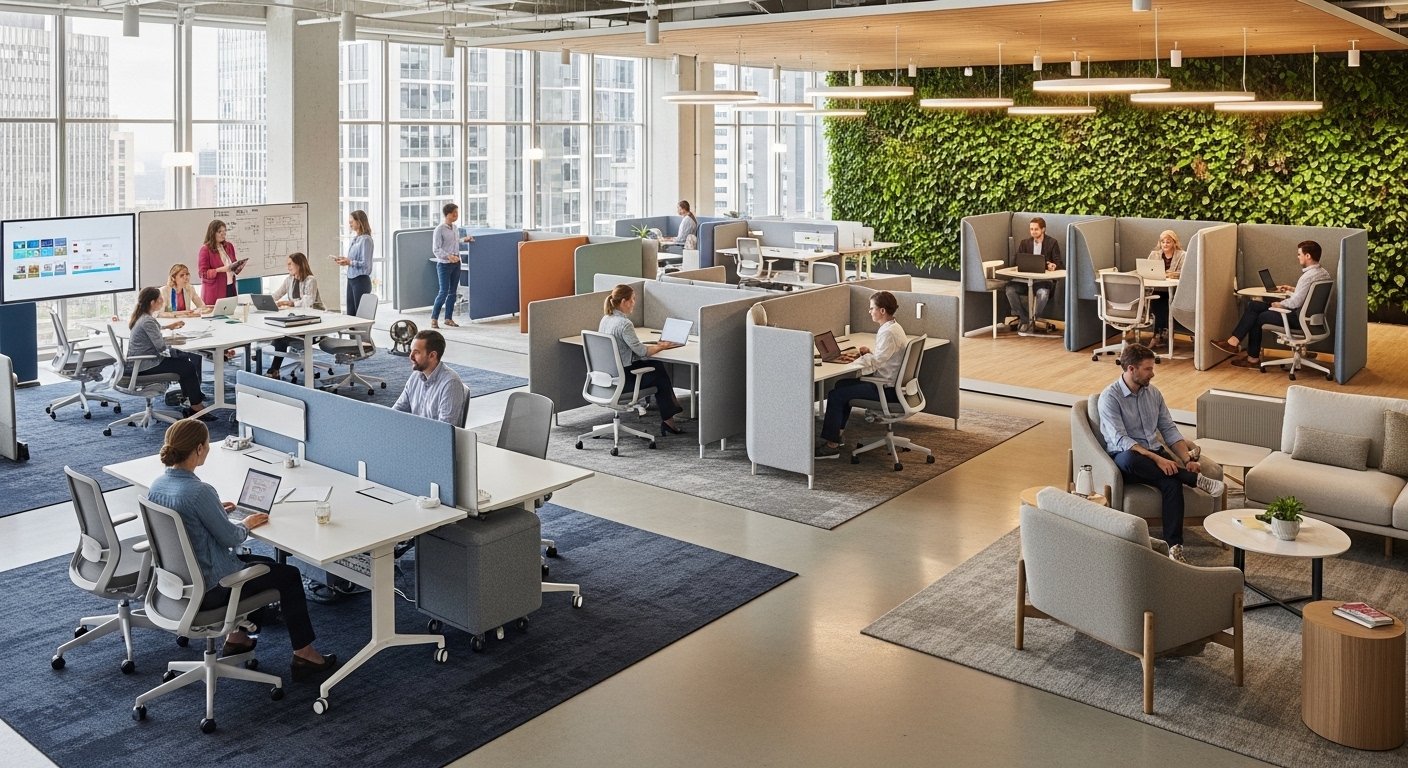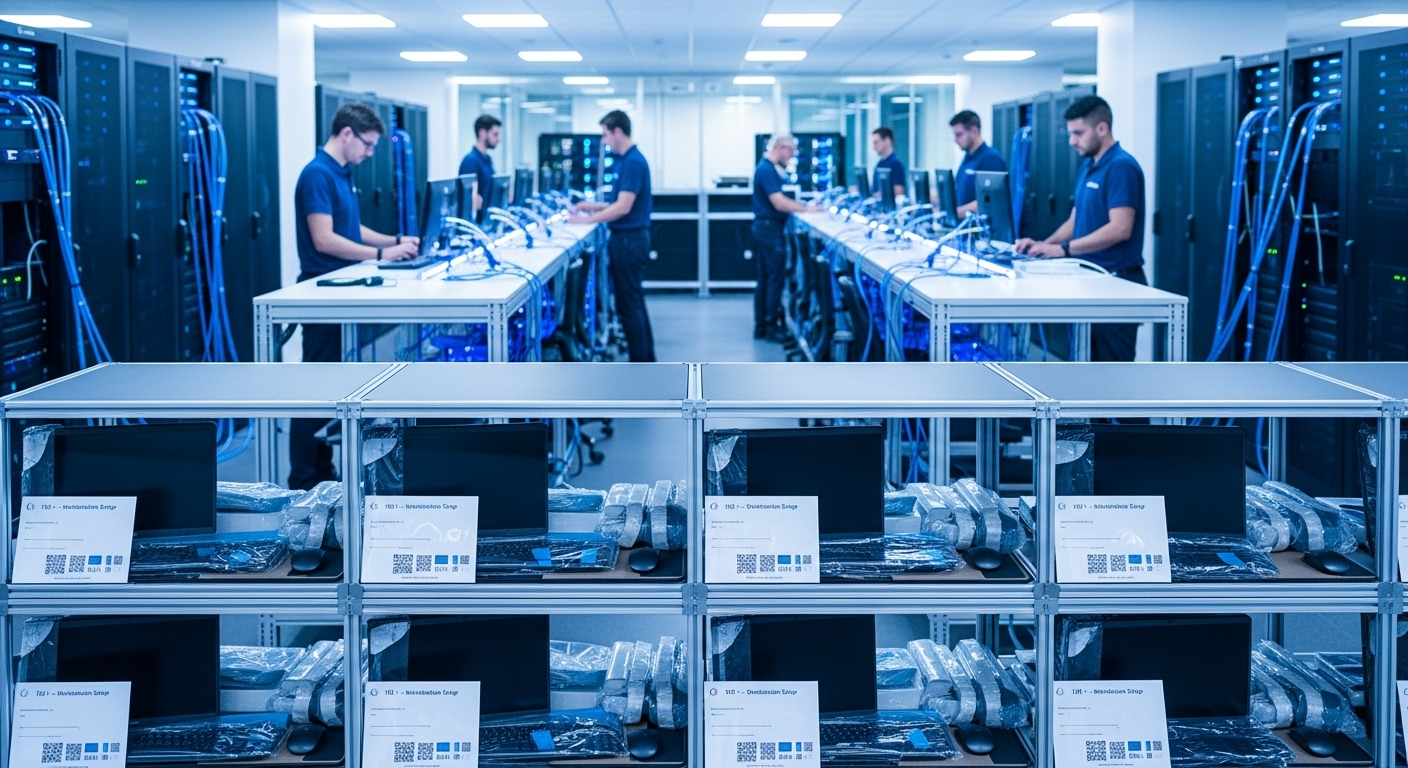Walk into any memorable space, and you feel it instantly—a distinct atmosphere, an unspoken story. This is no accident. It’s the result of intentional design that transforms a physical location into a powerful brand asset. In today’s competitive landscape, where company culture is a key differentiator for attracting and retaining top talent, branding your space is no longer a cosmetic afterthought; it’s a strategic imperative. Moving far beyond simply placing a logo on the wall, this approach, which we’ll call ‘atmospheric branding,’ involves weaving your company’s values, mission, and identity into the very fabric of the environment. It’s about creating an immersive experience that communicates who you are before a single word is spoken. This post explores how you can leverage your physical workspace to create a tangible advantage, fostering a stronger culture, enhancing employee performance, and leaving a lasting impression on everyone who walks through your doors.
Beyond the logo: defining atmospheric branding
Atmospheric branding is the art and science of shaping a physical environment to evoke specific feelings and behaviors that align with a company’s identity. It’s a holistic strategy that considers every sensory touchpoint—from sight and sound to texture and flow. While traditional branding might focus on a consistent color palette and logo placement, atmospheric branding goes deeper. It asks, ‘How should it feel to be here?’ The answer to that question guides every decision, from the choice of furniture and lighting to the layout of collaborative areas and the art on the walls. For example, a brand built on innovation and disruption might use dynamic lighting, flexible furniture, and raw, industrial materials to create a sense of energy and possibility. In contrast, a brand focused on trust and stability might opt for solid wood, classic design elements, and a quiet, ordered layout. This approach ensures that the workspace is not just a container for work but an active participant in the daily life of the company. It becomes a storyteller, constantly and subtly reinforcing the core principles that define the organization. This creates a powerful, cohesive experience that resonates with employees and visitors alike, turning the office into a true extension of the brand itself.
The psychological impact of a branded environment
The spaces we inhabit have a profound effect on our psychology, influencing our mood, focus, and interactions. A well-branded environment leverages this connection to cultivate a desired mindset and drive performance. For instance, incorporating biophilic design elements like natural light, plants, and natural materials has been shown to reduce stress, improve cognitive function, and increase creativity. This directly supports brands that value employee well-being and innovative thinking. Color psychology also plays a crucial role; blues can foster focus and calm, making them ideal for concentration zones, while energetic yellows or oranges can stimulate creativity in brainstorming areas. The layout itself communicates volumes about company values. An open-plan design with numerous informal breakout areas signals a culture of transparency and collaboration. Conversely, a design that prioritizes private offices and quiet zones might reflect a culture that values deep, focused work. As stated by workplace design experts, the goal is to create an environment where employees feel a sense of belonging and purpose.
‘When an employee feels that their environment reflects the values they were hired for, it reinforces their connection to the company and validates their role within the organization.’
This sense of alignment is critical for engagement and retention. A thoughtfully branded space makes employees feel seen, supported, and proud of where they work, creating a positive feedback loop that enhances both individual and collective performance.
Translating brand values into tangible design elements
The true power of atmospheric branding lies in its ability to make abstract values tangible. The process begins with a deep dive into your company’s core principles and then brainstorming how those principles can be expressed physically. Consider a core value like ‘Transparency.’ This can be manifested through the use of glass walls, open sightlines, and centrally located leadership desks rather than corner offices. It signals honesty and accessibility. If your brand champions ‘Sustainability,’ your space should reflect that with reclaimed wood furniture, energy-efficient lighting, robust recycling programs, and carpets made from recycled materials. For a brand defined by ‘Playful Creativity,’ the design could include writable walls, bold pops of color, unique art installations, and even recreational elements like a ping-pong table or a library nook. The key is authenticity. The design elements shouldn’t feel like a gimmick; they must be a genuine reflection of the company’s DNA. This means considering everything from the texture of the upholstery to the style of the coffee mugs in the kitchen. Each element is a small piece of a larger narrative, working together to tell a consistent and compelling brand story that employees live and breathe every day.
The role of color, materials, and light in your brand story
Color, materials, and light are the three primary tools for painting your brand’s atmospheric portrait. Your brand’s color palette should be used thoughtfully, not just splashed everywhere. Use primary brand colors as strategic accents in reception areas, collaborative hubs, or on feature walls to create visual impact and aid in wayfinding. Neutral tones can then provide a calming backdrop that allows these accents to stand out. Materials are equally important storytellers. Polished concrete and exposed steel can convey an industrial, modern, or tech-focused identity. Warm woods and soft textiles create a sense of comfort, stability, and human-centricity, often used by companies that want to project a welcoming and reliable image. The tactile experience of these materials—the feel of a wooden handrail or a velvet chair—adds a subconscious layer to the brand experience. Lighting is perhaps the most powerful mood-setter. Abundant natural light is universally beneficial, boosting energy and well-being. Artificial lighting can be layered to define different zones. Bright, cool light is effective in high-energy, collaborative spaces, while warmer, dimmer lighting can create intimate, focused environments in lounges or quiet rooms. Together, these three elements form a sensory language that communicates your brand’s personality far more effectively than words alone.
Integrating technology for a dynamic brand experience
In the modern workplace, technology is an essential layer of the brand experience. When integrated thoughtfully, it can make the environment more dynamic, interactive, and aligned with a forward-thinking identity. Digital signage is a prime example. Instead of static posters, screens in lobbies and high-traffic areas can display welcome messages for clients, celebrate team successes, share company news, or showcase brand values in motion. This keeps the environment fresh and communicative. Interactive installations, such as a touch-screen wall detailing the company’s history or a data visualization of a team’s progress, can create engaging moments that draw people in. Even functional technology can be a branding opportunity. A custom, branded Wi-Fi login page is a small but professional touch. Integrated room-booking systems that reflect the company’s visual identity streamline operations while reinforcing the brand. For a truly immersive experience, some companies use ambient soundscapes, designing audio environments that subtly change throughout the day to match desired energy levels—calm and focused in the morning, more energetic in the afternoon. The key is to use technology not as a gimmick, but as a tool to enhance communication, streamline processes, and bring the brand’s story to life in a contemporary and relevant way.
Branding on a budget: high-impact strategies for any scale
Creating a branded atmosphere doesn’t require a multi-million dollar renovation. With creativity and strategic focus, any company can make a significant impact on a limited budget. The most cost-effective tool is paint. A single, bold feature wall in a primary brand color can dramatically transform a reception or common area. Instead of expensive custom furniture, focus on high-impact, low-cost accessories like branded throw pillows, custom-printed mugs, or curated books in the lounge that reflect the company’s industry and interests. Environmental graphics are another powerful option. Large-scale vinyl decals featuring brand values, mission statements, or abstract brand patterns can be applied to walls or glass partitions for a fraction of the cost of structural changes. Partnering with local artists to create a mural or display rotating artwork can infuse the space with local culture and creativity, a great strategy for brands that value community connection. Don’t underestimate the power of decluttering and organization; a clean, well-organized space inherently feels more professional and intentional. By focusing on key touchpoints—the entrance, the main collaborative space, and the kitchen—you can concentrate your budget on the areas that have the most significant daily impact on employees and visitors, proving that a strong atmospheric brand is about thoughtful curation, not just expensive construction.
Measuring the roi of your branded space
Investing in your workspace is a significant decision, and like any business investment, its return should be measured. While some benefits are intangible, many can be tracked through qualitative and quantitative data. A primary area of impact is talent acquisition and retention. During recruitment, ask candidates for their impression of the workspace. Track comments in exit interviews and monitor employee turnover rates before and after environmental changes. Employee engagement surveys are a direct line to understanding the impact of the space. Include specific questions about the work environment, such as ‘Does our office design make you feel proud to work here?’ or ‘Does the space support your ability to collaborate effectively?’ Another metric is client and visitor perception. A well-branded space can be a powerful sales tool, communicating professionalism, stability, and a strong culture. Anecdotal feedback from clients is valuable, as are formal surveys. You can also monitor your company’s social media presence. An ‘Instagrammable’ office often leads to organic promotion from employees and visitors, effectively turning your space into a marketing asset. By tracking these metrics over time, you can build a strong business case that demonstrates how an investment in atmospheric branding is not an expense, but a strategic driver of culture, talent, and business growth.
In conclusion, branding your space is a profound opportunity to build a living, breathing manifestation of your company’s identity. It’s about consciously designing an atmosphere that does more than just house your team; it inspires them, connects them, and reinforces the shared values that define your culture. By moving beyond the superficiality of logos and embracing a holistic approach that considers psychology, materials, technology, and sensory experience, you create an environment with a distinct advantage. This ‘atmospheric advantage’ pays dividends in talent attraction, employee engagement, and overall performance. Whether you are undertaking a full renovation or implementing high-impact changes on a tight budget, the principle remains the same: every element of your space should tell a piece of your brand’s story. By being intentional with these choices, you transform your office from a simple place of work into a powerful strategic tool that actively builds your culture and drives your mission forward, one experience at a time.





